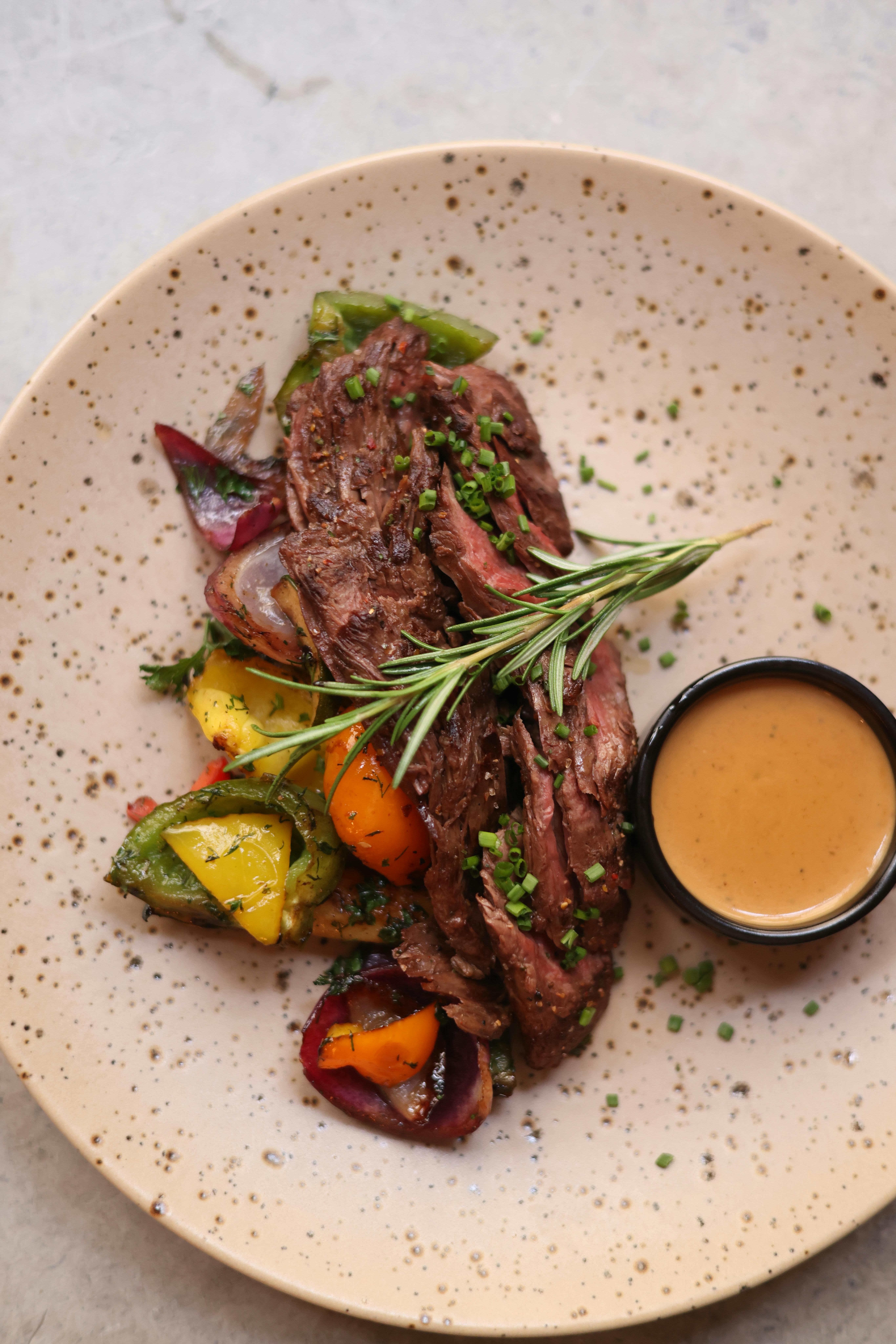If you have a furry friend with sensitive tummy troubles, finding the right food can be a daunting task. That's why we're here to help! In this article, we'll guide you through the world of hypoallergenic dog food and show you how to shop for the best options for your sensitive dog. Say goodbye to pesky food allergies and say hello to a happy, healthy pup!
What is Hypoallergenic Dog Food?
Hypoallergenic dog food is specially formulated to address the unique dietary needs of dogs with food sensitivities or allergies. These dogs may experience adverse reactions when consuming regular dog food that contains common allergens such as grains, certain proteins, or artificial additives. Hypoallergenic dog food aims to minimize these reactions by using alternative ingredients or modifying the composition of the food to make it more easily digestible for sensitive dogs.
Understanding hypoallergenic dog food
Hypoallergenic dog food typically contains ingredients that are less likely to trigger allergic reactions in dogs. These ingredients are carefully selected and often include novel proteins, limited ingredient lists, or hydrolyzed proteins. Novel proteins are proteins that are not commonly found in regular dog food, such as duck, venison, or salmon. Limited ingredient diets are formulated with a minimal number of ingredients to minimize the potential for allergic reactions. Hydrolyzed proteins are proteins that have been broken down into smaller molecules, making them easier for dogs with sensitive digestion to tolerate.
Benefits of feeding hypoallergenic food to sensitive dogs
Feeding your sensitive dog hypoallergenic food can offer several benefits. First and foremost, it can help alleviate the discomfort associated with food allergies or sensitivities. Dogs with food allergies often experience symptoms like itching, skin irritations, gastrointestinal issues, and even ear infections. By switching to hypoallergenic dog food, you can potentially reduce or eliminate these symptoms, leading to a happier and healthier pet.
In addition to relieving allergy symptoms, hypoallergenic dog food can also promote better overall health for your pup. These specialized diets are typically formulated with high-quality ingredients and can provide the necessary nutrients for optimal health. Some hypoallergenic dog food options are also designed to support specific health concerns, such as weight management or joint health.
Identifying Food Allergies in Dogs
It is essential to be able to recognize the signs and symptoms of food allergies in dogs to determine if a hypoallergenic diet is necessary.
Signs and symptoms of food allergies in dogs
Some common signs and symptoms of food allergies in dogs include:
- Itchy skin: Dogs with food allergies often exhibit excessive scratching, licking, or chewing of their paws, legs, or other body parts.
- Gastrointestinal issues: Food allergies can cause digestive problems such as vomiting, diarrhea, or increased flatulence.
- Ear infections: Dogs with food allergies may have recurrent ear infections, characterized by redness, swelling, and discomfort.
- Chronic ear inflammation: Frequent head shaking or rubbing of the ears can be a sign of an allergic reaction to food.
- Skin irritations: Food allergies can lead to skin irritations, including redness, rashes, hives, or hot spots.
Common food allergens for dogs
Certain ingredients in regular dog food are more likely to cause allergic reactions in dogs. These common food allergens include:
- Grains: Wheat, corn, soy, and other grains are frequent allergens for dogs.
- Beef: Beef is a common protein allergen for dogs, often causing skin irritations and digestive issues.
- Dairy: Milk and other dairy products can trigger allergic reactions in dogs, leading to gastrointestinal problems.
- Chicken: Chicken can be an allergen for some dogs, causing itching, digestive upset, or ear infections.
- Eggs: Dogs allergic to eggs may experience symptoms like skin irritations or gastrointestinal issues.
Diagnostic options for identifying food allergies
If you suspect your dog has food allergies, it is crucial to consult with a veterinarian. Your vet can help determine the underlying cause of your dog's symptoms through various diagnostic options, such as elimination diets, blood tests, or skin tests. These tests can help identify specific food allergens and guide you in choosing the most appropriate hypoallergenic dog food for your pet.

This image is property of images.pexels.com.
Choosing the Right Hypoallergenic Dog Food
When selecting hypoallergenic dog food for your sensitive pup, there are several factors to consider.
Considering your dog's specific dietary needs
Every dog is unique, and their dietary needs can vary. Before choosing a hypoallergenic dog food, consider your dog's age, breed, size, and any existing health conditions. Additionally, your veterinarian may provide specific recommendations based on your dog's nutritional requirements.
Reading ingredient labels and avoiding common allergens
Carefully reading the ingredient labels is crucial when selecting hypoallergenic dog food. Avoid known allergens for your dog, such as grains, beef, chicken, dairy, or eggs. Look for dog food brands that clearly list the ingredients and ensure that the limited ingredient diets or novel protein sources meet your dog's needs.
Understanding different types of hypoallergenic dog food: limited ingredient, novel protein, hydrolyzed protein
There are different types of hypoallergenic dog food available, each targeting different needs. Limited ingredient diets feature a minimal number of ingredients to minimize the potential for allergic reactions. Novel protein diets incorporate proteins that your dog may not have been previously exposed to, reducing the likelihood of an allergic response. Hydrolyzed protein diets involve breaking down proteins into smaller molecules, making them easier to digest and less likely to provoke an immune response in sensitive dogs.
Consulting with a veterinarian
Before making any significant changes in your dog's diet, it is essential to consult with a veterinarian. Your vet can provide personalized recommendations based on your dog's individual needs and help you make an informed decision regarding the best hypoallergenic dog food for your furry friend.
Top Brands of Hypoallergenic Dog Food
When it comes to hypoallergenic dog food, there are several top brands known for their quality and effectiveness in catering to sensitive dogs.
Brand A: Features, benefits, and customer reviews
Brand A is renowned for its high-quality hypoallergenic dog food options. They offer a wide range of limited ingredient and novel protein diets, suitable for dogs with various allergies and sensitivities. Customers rave about their dog's improved health and reduced allergy symptoms after switching to Brand A's hypoallergenic dog food.
Brand B: Features, benefits, and customer reviews
Brand B stands out for its hydrolyzed protein diets, which are highly digestible and gentle on sensitive stomachs. Many pet owners have reported significant improvements in their dog's digestive health and reduced allergic reactions with Brand B's hypoallergenic formulas.
Brand C: Features, benefits, and customer reviews
Brand C specializes in grain-free hypoallergenic dog food options, perfect for dogs with grain sensitivities or allergies. Their recipes are carefully crafted to provide complete and balanced nutrition while avoiding common allergens. Customers appreciate the brand's commitment to using high-quality ingredients and have seen positive results in their dog's overall well-being.
Brand D: Features, benefits, and customer reviews
Brand D offers a range of hypoallergenic dog food formulas tailored to specific dietary needs. Whether your dog requires a limited ingredient diet, novel protein source, or hydrolyzed protein formula, Brand D has a suitable option. Pet owners have praised the brand for its effective formulas and noticeable improvements in their dog's allergy symptoms.

This image is property of images.pexels.com.
Homemade Hypoallergenic Dog Food Recipes
If you prefer a more hands-on approach or want to have full control over your dog's diet, homemade hypoallergenic dog food recipes can be a great alternative.
Benefits and considerations of homemade dog food
Preparing homemade hypoallergenic dog food allows you to know exactly what ingredients are included and ensure that no potential allergens are present. This can be particularly beneficial for dogs with multiple food allergies or sensitivities. However, it is crucial to consult with a veterinarian or veterinary nutritionist to create nutritionally balanced recipes and ensure that your dog's dietary needs are met.
Guidelines for preparing balanced and nutritious hypoallergenic meals
When preparing homemade hypoallergenic dog food, it is important to follow certain guidelines to ensure that the meals are balanced and nutritious. Consider the appropriate ratio of protein, carbohydrates, and fat for your dog's specific needs. Choose alternative protein sources like novel meats or fish, and opt for hypoallergenic carbohydrates like sweet potatoes or quinoa. Adding essential supplements, such as omega-3 fatty acids or multivitamins, may be necessary to meet your dog's nutritional requirements.
Recipe 1: Limited ingredient hypoallergenic dog food
Ingredients:
- Lean ground turkey
- Sweet potatoes
- Green beans
- Peas
- Coconut oil
Instructions:
- Cook the lean ground turkey in a pan until fully cooked.
- In a separate pot, boil sweet potatoes until tender, then mash them.
- Steam the green beans and peas until cooked.
- In a mixing bowl, combine the cooked ground turkey, mashed sweet potatoes, steamed green beans, and peas.
- Mix in a small amount of coconut oil for added flavor and healthy fats.
- Serve the homemade limited ingredient hypoallergenic dog food in appropriate portions for your dog's size and weight.
Recipe 2: Novel protein hypoallergenic dog food
Ingredients:
- Boneless, skinless duck breasts
- Brown rice
- Spinach
- Carrots
- Flaxseed oil
Instructions:
- Cook the boneless, skinless duck breasts in a pan until fully cooked.
- Cook brown rice according to package instructions.
- Steam the spinach and carrots until cooked.
- In a mixing bowl, combine the cooked duck meat, cooked brown rice, steamed spinach, and carrots.
- Stir in a small amount of flaxseed oil for added nutritional benefits.
- Serve the homemade novel protein hypoallergenic dog food in appropriate portions for your dog's size and weight.
Recipe 3: Grain-free hypoallergenic dog food
Ingredients:
- Salmon fillets
- Sweet potatoes
- Broccoli
- Blueberries
- Olive oil
Instructions:
- Cook the salmon fillets in a pan until fully cooked.
- Boil sweet potatoes until tender, then mash them.
- Steam the broccoli until cooked.
- In a mixing bowl, combine the cooked salmon, mashed sweet potatoes, steamed broccoli, and blueberries.
- Drizzle a small amount of olive oil over the ingredients for added flavor and healthy fats.
- Serve the homemade grain-free hypoallergenic dog food in appropriate portions for your dog's size and weight.
Transitioning to a Hypoallergenic Diet
When transitioning your dog to a hypoallergenic diet, it is important to make the change gradually to minimize any potential digestive issues or adverse reactions.
Gradual transition vs. immediate switch
While some dogs may be able to tolerate an immediate switch to a new hypoallergenic dog food, it is generally recommended to transition gradually. Start by mixing small amounts of the new hypoallergenic food with your dog's regular food. Gradually increase the proportion of the new food over the course of a week or two until your dog is solely eating the hypoallergenic diet.
Introducing new hypoallergenic food and monitoring your dog's response
As you introduce the new hypoallergenic food, closely monitor your dog's response. Keep an eye out for any signs of allergic reactions or digestive issues. If you notice any adverse effects, consult with your veterinarian to determine the most appropriate course of action.
Dealing with potential digestive issues during the transition
Some dogs may experience mild digestive issues when transitioning to a new diet. This can manifest as loose stools, gas, or bloating. If your dog is experiencing digestive issues during the transition, you can try slowing down the transition process, offering smaller portions more frequently, or consulting with your veterinarian for additional guidance.

This image is property of images.pexels.com.
Additional Tips for Feeding Sensitive Dogs
When it comes to feeding sensitive dogs, there are some additional tips that can help promote their overall well-being and comfort.
Avoiding common allergens in treats and supplements
Just like with dog food, it is important to pay attention to the ingredients in treats and supplements. Avoid common allergens such as grains, beef, chicken, dairy, or eggs. Opt for hypoallergenic treats and supplements that are specifically formulated for dogs with sensitivities.
Considering hypoallergenic dog treats
Hypoallergenic dog treats are specifically designed to minimize allergic reactions in sensitive dogs. These treats are usually made with alternative protein sources and contain minimal additional ingredients. Consider incorporating hypoallergenic treats into your dog's diet to provide them with rewards and snacks that won't trigger allergies.
The importance of regular grooming for sensitive dogs
Regular grooming is especially important for sensitive dogs. Brushing your dog's coat frequently can help remove allergens and reduce the risk of skin irritation. Additionally, keeping your dog's ears clean and dry can help prevent ear infections, a common issue for dogs with food allergies.
Environmental factors to consider in managing sensitivities
While hypoallergenic dog food plays a significant role in managing your dog's sensitivities, it is also essential to address potential environmental factors that may contribute to allergies. Keep your dog's living environment clean, minimize exposure to dust mites or pollen, and consider using hypoallergenic bedding or air purifiers to create a more allergen-free space for your pup.
FAQs about Hypoallergenic Dog Food
Here are some frequently asked questions about hypoallergenic dog food:
Can any dog benefit from hypoallergenic dog food?
While hypoallergenic dog food is specifically formulated for dogs with food sensitivities or allergies, any dog can potentially benefit from these diets. Hypoallergenic food is often made with high-quality ingredients and can provide optimal nutrition for dogs with or without specific dietary concerns.
How long to see improvements in a dog's allergy symptoms?
The time it takes to see improvements in a dog's allergy symptoms after switching to hypoallergenic dog food can vary. Some dogs may show noticeable improvements within a few weeks, while others may take longer. It is important to be patient and monitor your dog's progress. If you do not see any improvements after a reasonable period, consult with your veterinarian for further guidance.
Can hypoallergenic dog food completely cure food allergies?
Hypoallergenic dog food can help manage food allergies and reduce the associated symptoms. However, it is important to note that hypoallergenic dog food cannot cure food allergies. Food allergies in dogs are typically lifelong, and the goal is to provide a diet that minimizes allergic reactions and improves quality of life.
What to do if your dog doesn't like the taste of hypoallergenic dog food?
If your dog doesn't enjoy the taste of a particular hypoallergenic dog food, you can try different brands or formulations. Consult with your veterinarian for recommendations on alternative hypoallergenic options that may be more appealing to your dog. It may also help to gradually introduce the new food and mix it with familiar flavors to ease the transition.
Can you mix hypoallergenic dog food with regular dog food?
While it is generally recommended to transition to a hypoallergenic dog food exclusively, some dogs may benefit from a mixed approach. Your veterinarian can provide guidance on whether it is appropriate to mix hypoallergenic dog food with regular dog food based on your dog's specific needs and dietary requirements.

Conclusion
Understanding the importance of hypoallergenic dog food for sensitive dogs is crucial for promoting their overall health and well-being. By identifying food allergies in dogs and choosing the right hypoallergenic dog food, you can help alleviate symptoms and enhance your dog's quality of life. Whether you opt for top brands of hypoallergenic dog food or choose to make homemade hypoallergenic meals, providing your sensitive dog with a suitable diet is vital. Additionally, transitioning to a hypoallergenic diet, considering additional feeding tips, and addressing environmental factors can further support your dog's sensitivities. By following these guidelines, you can ensure the best care for your sensitive dog, promoting a healthy and comfortable life.



1 comment
[…] technique works well because dogs are naturally sensitive to loud noises and sudden movements, which can often startle them into releasing whatever […]
Comments are closed.